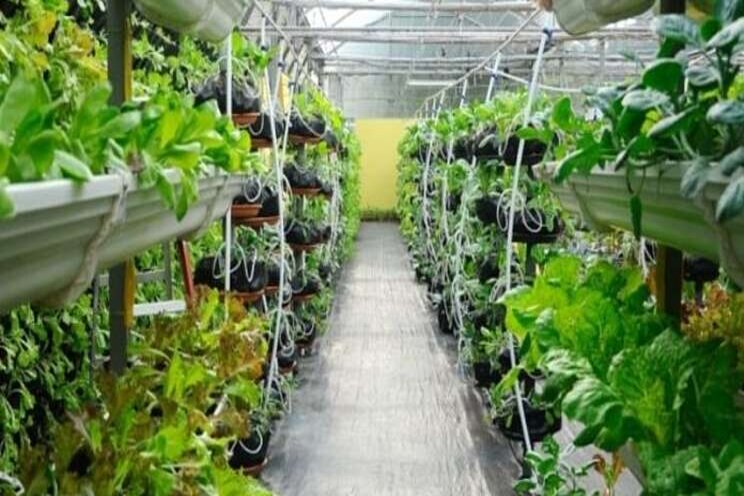Vertical farming is the future
Added on 23 June 2020

Researchers estimate that the world's population will increase by an astounding two billion people by 2050. With more and more people comes more and more mouths to feed.
Adding to the problem of an astronomically larger population, less and less land can be used for farming with each passing decade. As more people are born, they not only eat more food, they need more places to live. There is less farmable land today because of industrial and urban development.
While humans have farmed and worked the ground as long as history has recorded events, how humans farm has changed. From hands to primitive tools to animals to advanced machinery, the agricultural landscape has changed drastically over the millennia.
What is Vertical Farming?
Traditionally, farmers grow food on flat surfaces, like a field.
New and improved farming methods have been considered and researched to keep up with demand. With vertical farming, food is grown vertically, using existing buildings or skyscrapers, or repurposing warehouses or shipping containers.
Unlike traditional farming that relies on Mother nature and the elements, vertical farming often relies on CEA technology, also known as Controlled Environment Agriculture. With this approach, humans affect light, temperature, humidity, gases, and more, thus controlling the environment in which plants grow.
The technology used in vertical farming is just expanding into greenhouses, where light and temperature are artificially controlled. The end goal of vertical farming is to produce the most possible crops with the least possible space.
How to Vertical Farm
Four areas are essential to consider to understand vertical farming: physical area, light, medium, and sustainability.
ˇ Physical Area: As previously mentioned, the primary purpose of vertical farming is to get more food with less land. Crops are grown vertically on a tower structure.
ˇ Light: For success in growing, farmers use both natural and artificial lights in combination. Thanks to the utilization of new technologies, each plant gets the right amount of light.
ˇ Medium: Growers do not use soil in vertical farming, rather aeroponic, aquaponic, or hydroponic mediums are used.
ˇ Sustainability: Methods aimed at sustainability are utilized, so fewer resources are required, including energy and water.
Why Choose Vertical Farming?
As demonstrated here, there are many advantages to vertical farming, mainly being able to produce more food with less space. However, there are some other benefits, as well.
People are becoming more and more urban, with the vast majority of humans living in populated areas. Vertical farming allows humans to be prepared for the future with continued population growth and increased movement to cities.
Because the environment in which plants grow in vertical farming is very controlled, farming can happen year-round and is not dependent on the seasons and weather. Droughts, cold snaps, heatwaves, storms, and other natural events will not be a problem with vertical farming.
Vertical farming also uses substantially less water. Using less water means less of a toll on the environment and dwindling water supply. Vertical farming can potentially use 95% less water than traditional farming.
Vertical farming is beneficial to humans in multiple ways. First, it is easier to produce organic crops in such a controlled environment. Pesticides will not be needed to protect the plants. Second, farmers will be safer as there is less heavy machinery and exposure to bugs and pesticides.
Drawbacks of Vertical Farming
For all the benefits of vertical farming, there are some limitations. The most prominent issue is determining whether or not vertical farming is financially possible. The costs of building materials and operating costs are incredibly high. Food prices will likely increase if more affordable methods are not found.
A hot button issue lately is pollination. Vertical farming relies on manual pollination, as there are no insects in the controlled environment. This process is long and expensive. The cost of labor for vertical farming is generally high, as well. Because many vertical farming locations are in urban areas, the cost of labor is high.
Vertical Farming: Wave of the Future?
There is no doubt that the world faces severe problems in the future. Potentially the largest one is feeding an ever-growing population in a feasible, affordable, and sustainable way. Vertical farming may be the answer for which everyone is looking.
Vertical farming is sustainable, uses less space and water than traditional farming, isn't dependent on the weather, and is incredibly beneficial to humans. With more research and funding, vertical farming might become the new norm.
Source and Photo Courtesy of European Business Review
Source: European Business Review
More news















